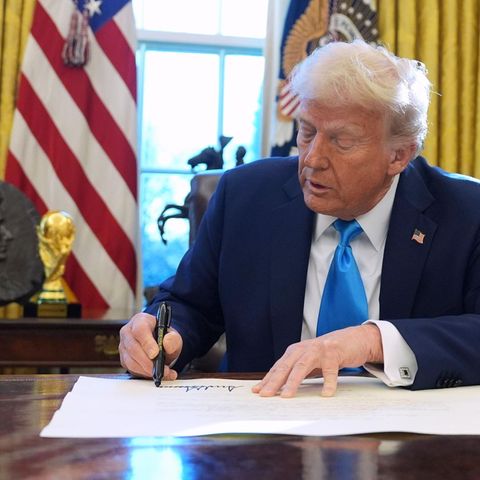Globally, markets are keeping an eye on expectations of interest rate cuts from the Fed, which recently signaled only one cut for the year despite persistent inflation. Operators continue to expect a possible reduction in September.
As for the dollar index, it remained stable on the day, near its highs since May. Meanwhile, the Mexican peso depreciated due to concerns about a proposed reform of the justice system that could affect the business climate in the country.
In Brazil, the real also lost value due to fears related to the fiscal situation and after a survey that showed an increase in inflation prospects. Economists expect the Central Bank to keep interest rates at 10.50% at least until the end of the year.
In Chile, The peso falls along with a drop in the price of copper, its main export. In Colombia, the peso also weakens, while in Peru the sol depreciates against the dollar.
ff5492db-a08c-468d-89e7-35b09160bb9d_16-9-discover-aspect-ratio_default_0.jpg
100 US dollar bills.
Thus, Latin American markets face challenges due to political and fiscal concerns, as well as uncertainty about the monetary policy decisions of the Federal Reserve and local central banks.
Traders will be awaiting comments from the president of the New York Fed, John Williams, his Philadelphia counterpart, Patrick Harker, and the governor of the central bank, Lisa Cook. In addition, they are waiting this week for data on May retail sales, industrial production, housing construction and the S&P PMI index, to model their projections on the path of interest rates.
How does it affect the CCL price?
The more the real devalues, the more pressure there is for the peso to also depreciate. If not, Argentina would become expensive for Brazilians.
The devaluation of the real accelerates the already marked appreciation of weightcould increase the expectation of local devaluation and in that sense it could delay currency settlement. That effect would reduce supply in the CCL market which was highly offered by the blend dollar and in that way upward pressure would be generated.
Analysts usually explain that what the devaluation of the real does is affect the bilateral RER and also the REER. This way, The products that Brazil offers to the world become more attractive and compete with Argentine products. That can put pressure on the peso that is supported by a high level of restrictions and adds some tension to the exchange gap.
Source: Ambito
I am a 24-year-old writer and journalist who has been working in the news industry for the past two years. I write primarily about market news, so if you’re looking for insights into what’s going on in the stock market or economic indicators, you’ve come to the right place. I also dabble in writing articles on lifestyle trends and pop culture news.




